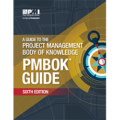
The Project Management Body of Knowledge (PMBOK) specifies the creation of a Communications Management Plan. The PRINCE2 project management methodology specifies an equivalent Communications Management Approach.
This plan describes how project communications will be managed, planned, structured, implemented and monitored for effectiveness.
A communications management plan contains the following 12 parts:
- Sender
- Receiver
- Content
- Stakeholder communication requirements
- Reason for communication
- Frequency and timing
- Resources
- Confidential Information
- Constraints
- Escalation processes
Sender
The minimum requirement for any communication is a sender, receiver, and a message.
There should never be a doubt who’s job it is to communicate with any given stakeholder. Human nature is such that if nobody is designated to share bad news, then it won’t get shared, and this can be a project killer.
There can be different contact people for different stakeholders within the project, but someone has to be designated for each communication item.
Receiver
Every communication must be directed at someone. In the case of a “push” communication, it must be explicitly stated who the information is intended for. Often it is necessary to require a response to ensure that the information has been processed.
A specific person is always best. A group or department is sometimes unavoidable, but opens the possibility that the communication can be lost in the shuffle.
Content
 The content of the communication is the message. It is the meat and potatoes of the communication. It should always be expressed in an easy to understand format and language. It should be edited and proof read if necessary. Review and approval requirements should be stated.
The content of the communication is the message. It is the meat and potatoes of the communication. It should always be expressed in an easy to understand format and language. It should be edited and proof read if necessary. Review and approval requirements should be stated.
There are many possible ways to convey a message:
- Phone conversations
- Team meetings
- Presentations
- Notice boards
- Newsletters, magazines or e-magazines
- Letters to staff
- Press releases
- Annual or progress reports
- Emails and intranets
- Web portals
- Focus groups
- Consultation meetings
- Face to face, formal or informal meetings with stakeholders
- Social media
All communication should be tailored to the recipient. For example, an investor newsletter should use familiar language and jargon. Also, stakeholders that are opposed to a project should be analyzed and the communications should be thoroughly reviewed to ensure it is being processed.
The level of detail should be specified in the plan. It should not be too onerous that it overloads the recipient, but not too light that they feel they don’t have enough information.
Stakeholder Communication Requirements
 Every project stakeholder has unique communication needs and requirements, hence they require their own unique communication strategy. This strategy should be detailed in the communications plan, but include the following details:
Every project stakeholder has unique communication needs and requirements, hence they require their own unique communication strategy. This strategy should be detailed in the communications plan, but include the following details:
- Sender and Receiver
- Content
- Method of delivery
- Frequency
- Timing
- Reason for communication
The communication requirements form a basis for project control. That is, at regular project control points the project communications are inspected to ensure that the communication has happened according to the plan. If not, corrective actions are taken, and if so, the plan is inspected to determine if it is working as planned or needs to be updated.
Reason for Communication
Every communication addresses an underlying need. Expressing that need within the plan often addresses the core issues that can guide future decision making and ensure the communications plan is effective in carrying out its purpose.
Frequency and Timing
Frequency and timing of stakeholder communication has tripped up many projects that have otherwise done everything right.
Often the frequency and timing of communication with stakeholders is just as critical as making the communications in the first place. For example, telling a stakeholder that you wish to annex some of their land might get a favorable response when performed six months prior to the transaction, but if the communication is performed one week before the transaction the stakeholder will be offended and the project will be jeopardized. To put it another way, poorly timed communications not only lose their value, they can become negative in value (create their own problems).
Resources
 Many communication channels, like web portals, open houses, newsletters and the like require resources and a budget. Commensurate upon the size of the project, these resources are defined in the communications plan. They include:
Many communication channels, like web portals, open houses, newsletters and the like require resources and a budget. Commensurate upon the size of the project, these resources are defined in the communications plan. They include:
- People: The manpower required to produce the communications
- Materials: Items which are used up in the production, such as paper
- Tools and Equipment: Items which are required to produce the communications and returned in the same condition, such as a printer
- Facilities: The buildings which must be leased, purchased, or rented to house the people and equipment to produce the communications
- I.T. Systems: The project management information systems that facilitate and track the communications.
In project management, projects are broken down into tasks, with each task assigned a budget and schedule, like this:
| Task | Budget | Start Date | End Date |
|---|---|---|---|
| Write Newsletter | $2,500 | Sep. 20 | Sep. 30 |
The communication tasks are often integrated into the task, for example:
| Task | Budget | Start Date | End Date |
|---|---|---|---|
| Land Annexation | $50,000 | May 1 | Oct. 31 |
The project control function then inspects the task at regular intervals to ensure it is on time and budget, that the work has been completed according to plan and is accomplishing its intended objectives, and the plan is updated if necessary. Hence, the stakeholder communication that occurs within the task must be part of this process. A separate task for the communication can make it easier to track and manage, but is not necessary nor always feasible for small communications.
Confidential Information
Not all projects have confidential information, but I would suggest that there are very few projects that don’t have to deal with some form of information control, like trade secrets, employee salaries, information protected under Freedom of Information and Privacy legislation, and the project budget itself. In the construction industry, the information underlying every project budget is a corporate secret that is rigorously protected from competitors.
Hence, the project communications plan identifies any confidential information and the strategy to keep that information confidential. Most importantly, it includes the person who is in charge of each piece of confidential information.
Constraints
It may seem trivial and unlikely to affect you, but many project communications have legislative constraints that impact them. For example:
- Investor communications should not contain sensitive insider information.
- Project team communications are governed by a host of union, safety, and labor legislation.
Additionally, there might be constraints to giving certain information to external parties due to organizational policies or potential legal action rather than government legislation.
Escalation Process
Wouldn’t it be nice if every stakeholder that was communicated with was happy with the information? Some projects don’t have alot of bad news to give to stakeholders, but this is not the norm.
For this reason, an escalation process can be established in the communication plan prior to any conflicts taking place.






